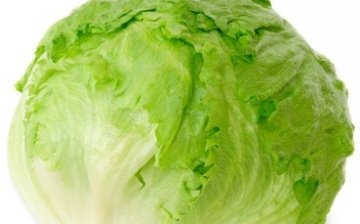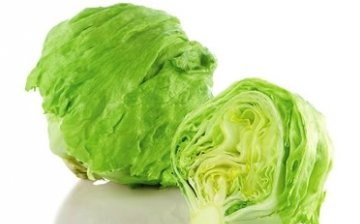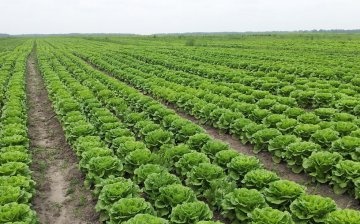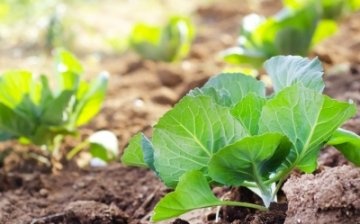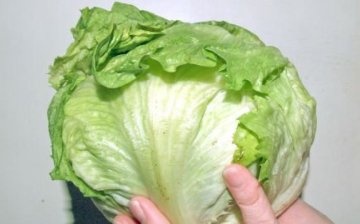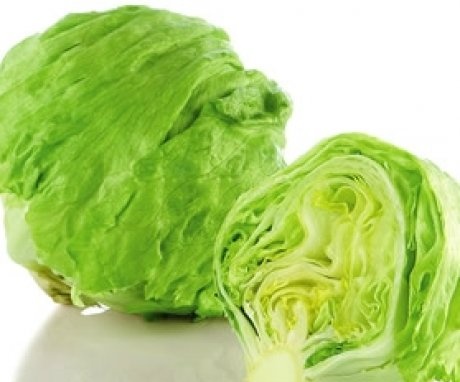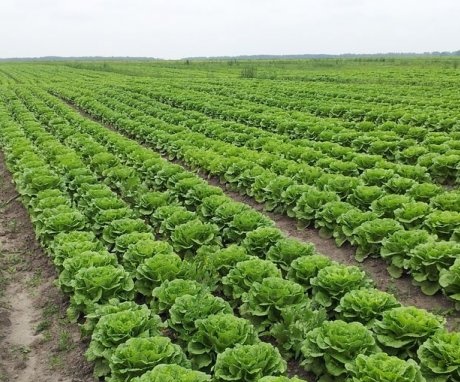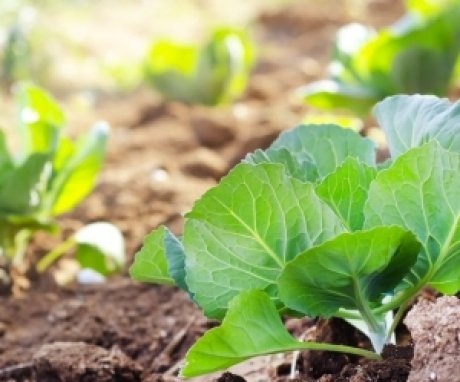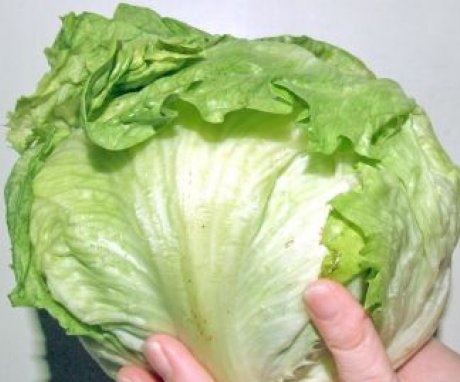Iceberg cabbage: varieties, care, reproduction and useful properties
Lettuce is a plant that has a lot of vitamins and is widespread in almost all continents. There are a huge number of species and varieties that can be grown at home on a summer cottage or even on a balcony.
Content:
- Iceberg cabbage varieties
- Iceberg cabbage care
- Iceberg cabbage propagation
- Beneficial features
Iceberg cabbage varieties
Iceberg lettuce is similar in appearance to white cabbage, the same rounded shape and leaves, collected in a tight head. However, the leaves are much juicier, and the head of cabbage itself is looser. The leaves are painted light green, and the edges are serrated. His homeland is California. According to some sources, its name came from the fact that this salad was delivered from California in containers with ice, so that the freshness remained longer.
According to other sources, the taste of the salad is refreshing, with a hint of eucalyptus.
A large number of varieties of salads are grown in the world, which differ in leaf shape, size, color:
- Iceberg Nanet RC. This Iceberg lettuce variety is planted at the end of March. Differs in fast growth and early head formation. Resistant to disease and arrow formation.
- Iceberg Lagunas RC. The head of the head grows to a small rounded shape. It grows slowly, the leaves in the head of cabbage remain loose for a long time, so you do not need to harvest the entire crop at once. This variety can be grown all year round in plots and greenhouses.
- Iceberg Helenas RC. It has an average head size and grows quickly. A fairly high-yielding variety. The head of cabbage has a rounded and slightly flattened shape. This variety is used for the period from early spring to mid-summer.
- Iceberg Platinas RC. This iceberg variety is distinguished by a very long-term yield, the heads of cabbage ripen gradually. Rounded shape, medium-sized leaves, very juicy. Can be grown outdoors from early spring to late fall.
- Iceberg Santarinas RC. The size of the salad is medium, with a long ripening period. Suitable for planting from mid-spring to mid-summer. The shape of the head is round, flattened.
- Iceberg Diamantinas RC. A distinctive feature of this variety is that any soil can be used to grow it. Planting and harvesting period from early to late spring. It can be on the garden bed for a long time in a mature state.
- Iceberg Argentinas RC. This is one of the varieties that can be grown all year round. The head is round, the structure is loose. Resistant to pests.
Iceberg cabbage care
Iceberg lettuce does not require special conditions for growing and is easily grown on a personal plot, a summer residence or a windowsill. Therefore, in recent years, this plant is increasingly found.
The iceberg does not require special care and will delight with its delicious greens almost all summer.
One of the important points in the care of salads is watering:
- These plants do not like excessive moisture, so there should be a moderate amount of water and it should not stagnate in the beds, this can lead to rotting of the leaves and head.
- During the period when the head begins to tie, watering is reduced.
- It is also necessary to regularly loosen the soil and remove weeds near the plant in order to allow air to flow to the roots.
Iceberg cabbage propagation
In order for the Iceberg salad to please with its juicy greens for a longer time, the seedlings should be sown in several stages.
Thus, the germination and maturation of the vegetable will also be with a certain period of time. For example, if you sow seeds with an interval of 2 weeks, then the third and subsequent crops can already be done in open ground.
For sowing in open ground, you must choose a shaded place with loamy, well fertilized soil... It is worth watering this plant regularly, drying out can lead to the rapid death of the salad.
Breeding tricks:
- For good development, a low temperature is required; in the summer heat, the plant does not develop well, and the formation of a head of cabbage slows down.
- For this reason, the best time to grow and harvest Iceberg lettuce is in the spring, before the hot summer days.
- Seedling preparation begins 30–35 days before planting in open ground.
- The seeds are soaked for a day, dried a little and sown in peat soil.
- It is preferable to sow 2-3 seeds in peat tablets, since lettuce seedlings do not tolerate transplanting well.
- A strong deepening of seeds during planting can reduce the percentage of germination, so the depth should be no more than 0.5 cm.
After the seeds have hatched, the box with the seedlings is transferred to a cool and bright place for further growth.
When the soil on the site has already warmed up enough seedlings can be planted, before that, the boxes must be taken out into the open air for a couple of days. It is recommended to fertilize the area where Iceberg lettuce will grow with nitrogenous fertilizer.
When the head of cabbage is ripe, it is recommended to cut it in the morning, when there is still dew. This contributes to a longer preservation of the freshness of the salad.
Beneficial features
The juicy and crispy Iceberg lettuce leaves contain a lot nutrients and vitamins... Its content of folic acid, which stimulates mental activity, is much higher than in other types of salads.
It also contains a large amount of vitamins:
- Vitamins A and C.
- Vitamins E and some B vitamins are present in small amounts.
- Potassium, phosphorus, iron are also found in this salad, which is useful from any side.
This salad is recommended for both adults engaged in mental activity and children in order to maintain immunity. It relieves the symptoms of fatigue, has a good effect on the gastrointestinal tract. Also, this plant has a positive effect on the cardiovascular system and improves vision.
With the constant use of this salad in food, it is fashionable to notice an improvement in the condition of the skin.
Iceberg salad is used in cooking. Many diets recommend adding this particular salad to the list of must-have and daily foods. It is used only raw, as it loses all useful properties and external beauty during heat treatment.
More information can be found in the video.



